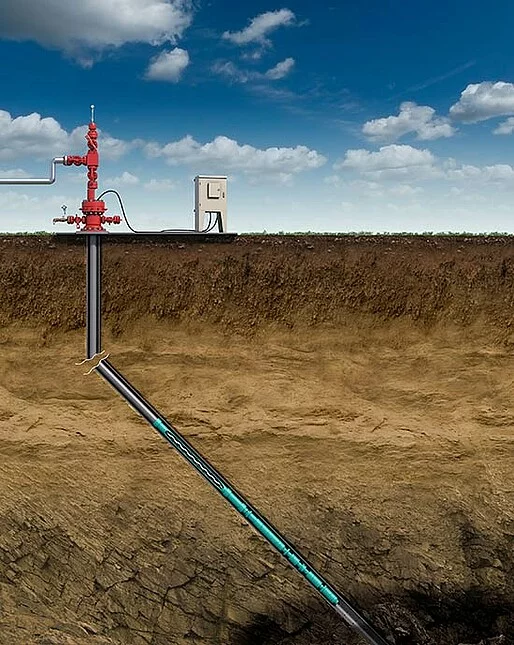The first installation in Central Europe: Downhole progressing cavity pump with submersible drive prevents blowouts and environmental impact from leaks
A German energy supplier had initially used a geological horizon for gas storage, but then decided to extract crude oil from the same deposit.
Therefore, a suitable extraction system had to be acquired for transporting the multi-phase mixture with a high gas content to the surface from 1,200 m below.

Task
A suitable pump system had to be acquired in order to reliably transport the crude oil to the surface from a depth of more than 1,200 m. The extreme conditions on site, however, presented very high requirements for the pump design: as the medium was a multi-phase mixture with a very high gas content, the usual centrifugal pumps with underground drive were not an option. With a very high free gas content, this type of pump always presents the risk of all impellers filling up with gas. Therefore, it was extremely likely that a centrifugal submersible pump would have failed in this application due to the so-called gas lock.
The progressing cavity pumps, which are normally used in Central Europe until now, have been systems with above-ground drive. These units have a dynamic seal on the surface which has a significant disadvantage in case of extreme pressure increase on the intake side: the seal can become overloaded and trigger a blowout.

Solution
To exclude this risk, NETZSCH decided on a progressing cavity pump which is driven underground – the NETZSCH ESPCP (ESPCP stands for “Electric Submersible Progressing Cavitry Pump). The special feature of this pump is that the rotor is not driven via a very long rod, but rather the rotor-stator combination and the motor are sunk into the well. The motor is connected directly to the rotor via a short flexible rod. All radial and axial forces of the rotor are absorbed by a special underground bearing housing. In addition to this, the dynamic seal is also located in the 1,200 m deep well. This moved all critical components of the pumping solution below ground, precluding environmental impact from leaks above ground.


